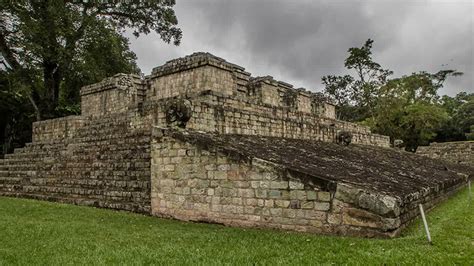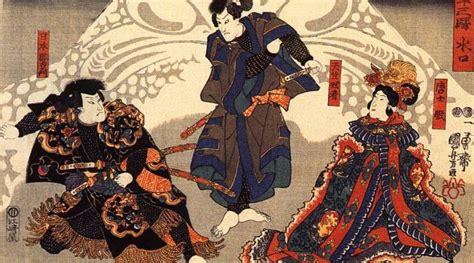Explore the colonization, indigenous inhabitants, European exploration, sugar and slavery economy, independence, and modern era of the Caribbean in this informative blog post.
Colonization of the Caribbean
Contents
The colonization of the Caribbean by European powers began in the late 15th century with the arrival of Christopher Columbus in 1492. This marked the beginning of a new era for the indigenous peoples of the region, as they were soon to come into contact with Spanish, English, French, and Dutch colonizers. The indigenous inhabitants of the Caribbean, known as the Caribs and Arawaks, initially had friendly relations with the Europeans, but soon found themselves subjected to enslavement, forced labor, and violence.
As the European powers sought to establish colonial outposts and exploit the natural resources of the Caribbean, they brought with them a brutal system of slavery. The production of sugar, in particular, became a major industry in the region, and plantations worked by enslaved Africans formed the backbone of the Caribbean economy. The legacy of this period of colonization and exploitation continues to influence the social, cultural, and economic landscape of the Caribbean today.
The island of Saint Vincent and the Grenadines, like many others in the region, was claimed by various European powers at different times. The British ultimately gained control of the islands in the 18th century, and slavery was abolished in 1834. The legacy of colonial rule, however, has left deep scars on the societies of the Caribbean, and the struggle for independence and self-determination continues to this day.
Today, the Caribbean nations are independent states, but the influence of their colonial past is still felt in a variety of ways. Tourism, trade, and political alliances with former colonial powers continue to shape the relationships between the Caribbean and the rest of the world.
Early Indigenous Inhabitants
Early Indigenous Inhabitants
Saint Vincent and the Grenadines, located in the eastern Caribbean, has a rich history of early indigenous inhabitants. Before the arrival of European explorers, the islands were inhabited by the peaceful Arawak and Carib peoples. These indigenous groups lived in harmony with the natural environment, relying on farming, fishing, and hunting for their sustenance.
The Arawak people were the first to settle in Saint Vincent and the Grenadines, arriving around 100 AD. They were skilled in pottery making and agriculture, cultivating crops such as yams, cassava, and sweet potatoes. The Arawaks also established trade networks with other indigenous groups in the region, exchanging goods and sharing cultural practices.
The arrival of the Caribs in the 14th century brought about a shift in the dynamics of the islands. The Caribs, known for their seafaring prowess and warrior culture, quickly asserted their dominance over the Arawak population. Despite this, the two groups coexisted for centuries, with occasional conflicts but also periods of peaceful interaction.
It is important to acknowledge the enduring legacy of the early indigenous inhabitants of Saint Vincent and the Grenadines. Their contributions to the cultural landscape of the islands, as well as their resilience in the face of colonialism, have left an indelible mark on the history of the Caribbean.
European Exploration and Settlement
European Exploration
The history of Saint Vincent and the Grenadines is intricately tied to European exploration and settlement. European explorers first arrived on the islands in the late 15th century, with the Spanish claiming the area in the name of the Crown. However, it was the British who eventually established a lasting presence on the islands, setting up plantations and importing slaves to work on them.
Settlement and Plantation Economy
During the 17th and 18th centuries, Saint Vincent and the Grenadines became a major hub for plantation economies, particularly with the cultivation of sugarcane. The British settlers established large sugar plantations and imported African slaves to work on them, leading to a significant increase in the island’s population.
Impact on Indigenous Peoples
The European settlement had a devastating impact on the indigenous Arawak and Carib peoples who had originally inhabited the islands. The arrival of European colonizers led to violent conflicts and the displacement of the indigenous population, with many either being killed or forced to flee their ancestral lands.
Lingering Legacy
The legacy of European exploration and settlement continues to be felt in Saint Vincent and the Grenadines today, with many aspects of the islands’ culture, language, and customs being influenced by their colonial past. The plantation economy and the legacy of slavery have also left a lasting impact on the socio-economic structure of the islands.
Sugar and Slavery Economy
The history of Saint Vincent and the Grenadines is intricately tied to the sugar and slavery economy that dominated the Caribbean during the colonial period. European powers, primarily the British, established sugar plantations on the islands and relied heavily on enslaved Africans to work the fields and mills. The labor-intensive production of sugar became the cornerstone of the economy in Saint Vincent and the Grenadines, shaping the social and economic structure of the islands.
The impact of the sugar and slavery economy on the indigenous Carib population was devastating. The Caribs, who were the original inhabitants of the islands, were gradually displaced and decimated by European diseases and violence. Many Caribs were also enslaved and forced to work on the sugar plantations, leading to the near extinction of their culture and way of life.
The harsh and inhumane conditions of slavery in the sugar plantations have left a dark legacy in the history of Saint Vincent and the Grenadines. Enslaved Africans were subjected to brutal treatment, exploitation, and dehumanization, with many enduring unimaginable suffering and hardship. The profits generated from the sugar trade fueled the growth of the plantation economy, but it came at a great cost to the enslaved population.
The abolition of slavery in the 19th century brought about significant changes to the sugar economy in Saint Vincent and the Grenadines. The transition from slavery to wage labor posed new challenges and opportunities for the islands, as former slaves sought to secure economic independence and social mobility. The legacy of the sugar and slavery economy continues to echo in the cultural, social, and economic fabric of the islands, underscoring the enduring impact of this historical period.
Independence and Modern Era
Saint Vincent and the Grenadines gained independence from Britain on October 27, 1979, becoming a sovereign nation within the British Commonwealth. This marked the end of colonial rule and the beginning of a new era for the country.
After gaining independence, Saint Vincent and the Grenadines faced numerous challenges, including economic instability and political unrest. However, the country was able to overcome these challenges and establish itself as a stable and prosperous nation in the Caribbean.
In recent years, Saint Vincent and the Grenadines has made significant progress in various areas, including education, healthcare, and infrastructure development. The government has also prioritized environmental conservation and sustainable development, making the country a leader in the region in these areas.
Today, Saint Vincent and the Grenadines is known for its rich cultural heritage, stunning natural landscapes, and warm hospitality. The country continues to attract tourists from around the world who come to explore its beautiful beaches, vibrant festivals, and diverse wildlife.












